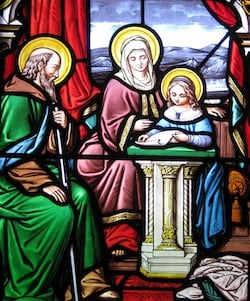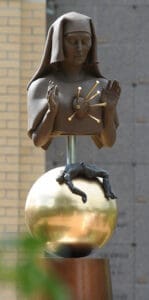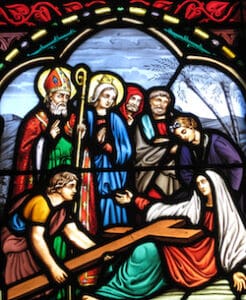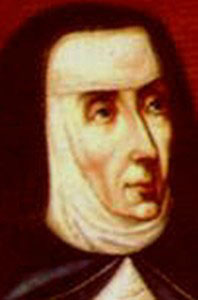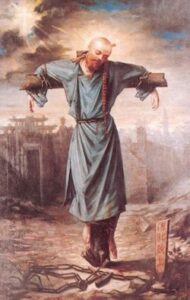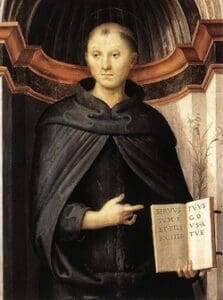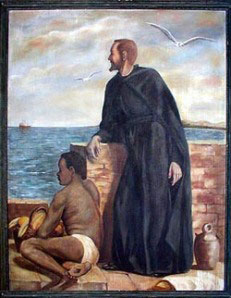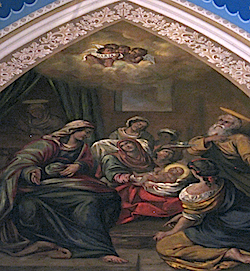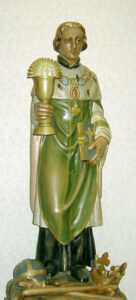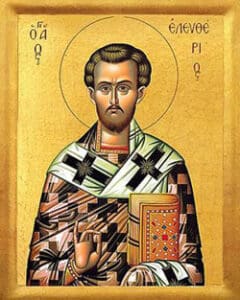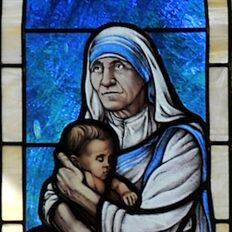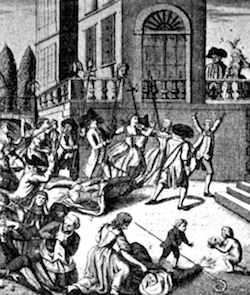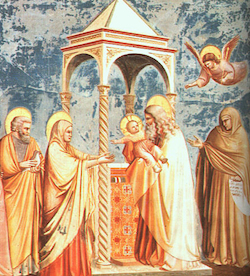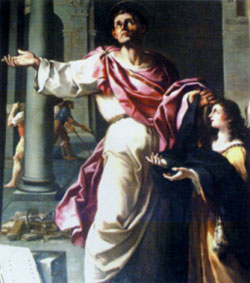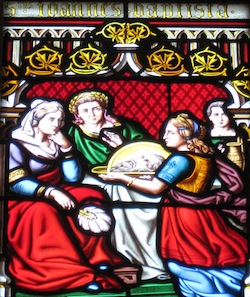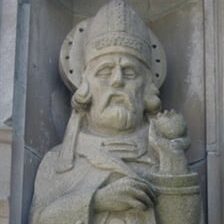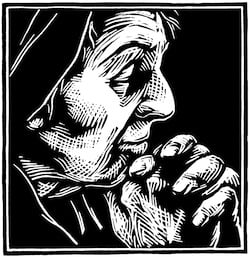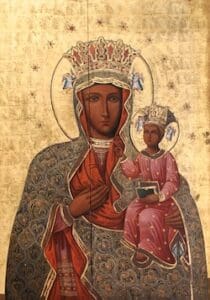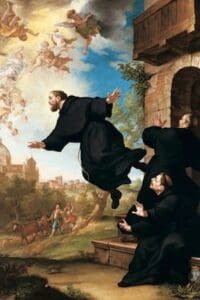

St. Joan of Arc is heroine of France and revered as a holy person for her faithfulness and courage, which she displayed in battle, but even more acutely in her trial and execution.
She was born Jeanne in 1412 on the feast of the Epiphany. Her parents were peasant farmers who lived in a small village in the Champagne region of France. She never learned to read or write, but was full of faith.
“She was so good that all the village loved her,” her neighbors said of her. As a girl, she loved to pray and receive the sacraments, and she cared for the sick and the indigent—often giving them her own bed.
At the age of 14, she began hearing voices telling her she had a mission to save France. She began to recognize these voices as those of saints—Michael the Archangel, St. Catherine of Alexandria, and St. Margaret of Antioch.
It was a time of civil war and political turmoil in France. The English had invaded and allied with an army from the region of Burgundy. Together, this force had displaced the French king and threatened to conquer the whole nation.
When the voices would not go away, Joan presented herself as a resource to the local commander of the French army, but he laughed and sent her away. She returned when the voices became even more insistent. The commander softened his skepticism when a defeat that she had foretold actually came about.
He sent her to King Charles VII with an escort. The king received her in a large audience room, but disguised himself. She immediately identified him, and convinced him of her revelations. He had her examined by theologians, who found nothing objectionable, and she was sent to the head of the army in Orleans, a town under siege by the English.
She marched into battle with a banner that proclaimed the names of Jesus and Mary. Within 10 days, the siege was broken. Even though she was wounded by an arrow, she pressed on with the army to other regions and routed her opponents. Her victory regained a bulk of the kingdom of France from the intruders, and concluded the mission that was entrusted to her by the voices she heard. She predicted all of these events before any of them happened.
She went on to lead a bold attack on Paris, but from then on she found no success in her military quests. She was wounded again in battle, and was captured by soldiers from Burgundy and sold to England. The French court did nothing to come to her aid, and she was tried as a witch. She was questioned and examined tirelessly about the voices she heard, her faith, and the fact that she wore armor in battle to appear as a man. She had no one to counsel her, yet faced her inquisitors and accusers with courage and simple cleverness.
They exploited her lack of education by trapping her with theological terms, and she was condemned and denounced. The authorities handed her over for punishment as a heretic if she refused to retract her statements. She stood her ground, even though she was threatened with torture, and was burned at the stake, still a teenager.
Two decades later, her family asked the pope to reopen the case, and her verdict was thrown out. Joan’s case was vindicated, and she was eventually canonized in 1920. She is venerated as a saint, but not as a martyr.
Joan of Arc is patron saint of France and of soldiers. She is depicted in a statue that stands above the east door of the Basilica—the War Memorial Door that bears the “God, Country, Notre Dame” inscription. This door is dedicated to soldiers from Notre Dame who died during World War I.
The statuette above stands in the Raclin Murphy Museum of Art. Read an article in Church Life Journal about the witness of Joan of Arc’s sainthood by Sr. Ann Astell, professor theology at Notre Dame.
To learn even more about Saint Joan of Arc, watch this video lecture from the McGrath Institute for Church Life at the University of Notre Dame.
St. Joan of Arc, you were an illiterate, peasant, teenaged saint who listened to the will of God and led an army—pray for us!
Image credit:
Emmanuel Frémiet (French, 1824-1910), Joan of Arc, after 1874, bronze. Raclin Murphy Museum of Art: Fred and Delores Geissel Memorial Fund, 1979.049.



